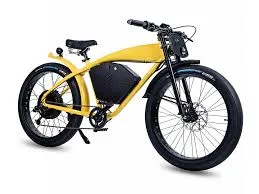
- Afrikaans
- Albanian
- Amharic
- Arabic
- Armenian
- Azerbaijani
- Basque
- Belarusian
- Bengali
- Bosnian
- Bulgarian
- Catalan
- Cebuano
- Corsican
- Croatian
- Czech
- Danish
- Dutch
- English
- Esperanto
- Estonian
- Finnish
- French
- Frisian
- Galician
- Georgian
- German
- Greek
- Gujarati
- Haitian Creole
- hausa
- hawaiian
- Hebrew
- Hindi
- Miao
- Hungarian
- Icelandic
- igbo
- Indonesian
- irish
- Italian
- Japanese
- Javanese
- Kannada
- kazakh
- Khmer
- Rwandese
- Korean
- Kurdish
- Kyrgyz
- Lao
- Latin
- Latvian
- Lithuanian
- Luxembourgish
- Macedonian
- Malgashi
- Malay
- Malayalam
- Maltese
- Maori
- Marathi
- Mongolian
- Myanmar
- Nepali
- Norwegian
- Norwegian
- Occitan
- Pashto
- Persian
- Polish
- Portuguese
- Punjabi
- Romanian
- Russian
- Samoan
- Scottish Gaelic
- Serbian
- Sesotho
- Shona
- Sindhi
- Sinhala
- Slovak
- Slovenian
- Somali
- Spanish
- Sundanese
- Swahili
- Swedish
- Tagalog
- Tajik
- Tamil
- Tatar
- Telugu
- Thai
- Turkish
- Turkmen
- Ukrainian
- Urdu
- Uighur
- Uzbek
- Vietnamese
- Welsh
- Bantu
- Yiddish
- Yoruba
- Zulu
Dec . 12, 2024 02:19 Back to list
Charging Solutions for Electric Bikes A Comprehensive Guide to Convenient Power Sources
Electric Bike Charging The Future of Eco-Friendly Transportation
In recent years, the popularity of electric bikes (e-bikes) has surged, emerging as a preferred mode of transport for many urban commuters. The rise of e-bikes can be attributed to their numerous advantages over traditional bicycles and motor vehicles, including lower environmental impact, cost efficiency, and health benefits. However, one crucial aspect that underpins the convenience and functionality of e-bikes is the charging infrastructure. Understanding electric bike charging is essential for both current and potential e-bike users, as it plays a significant role in the overall e-biking experience.
Electric bikes are equipped with rechargeable batteries that power their electric motors. Typically, these batteries come in lithium-ion variants, known for their efficiency and longevity. The charging process for e-bikes is relatively straightforward; however, it requires an understanding of battery capacities, charging times, and appropriate charging locations.
Understanding Battery Capacity and Range
The capacity of an e-bike's battery, measured in watt-hours (Wh), directly influences its range – the distance it can travel on a single charge. Most e-bike batteries range from 250Wh to 1000Wh. Higher capacity batteries allow for longer rides but also take longer to charge. For instance, a 500Wh battery may take 4 to 6 hours to reach a full charge, which is important for users to factor into their daily routines.
Charging Options
E-bike users have several charging options, each with its benefits and drawbacks
1. Home Charging The most common method, charging at home allows riders to conveniently recharge their bikes overnight. Most e-bikes come with an AC charger that can be plugged into a standard wall outlet. Riders should ensure they follow the manufacturer's guidelines for charging to maximize battery life.
electric bike charging

2. Public Charging Stations As e-bikes become increasingly popular, cities are beginning to install dedicated charging stations. These can often be found in parks, shopping centers, or near public transportation hubs. Using these stations can be a great option for commuters who need a quick boost during the day.
3. Workplace Charging Many employers recognize the benefits of e-bikes for commuting and offer charging facilities at the workplace. This not only encourages eco-friendly transportation but also enhances employee satisfaction.
4. Portable Chargers For those who may frequently find themselves away from standard charging options, portable chargers offer a convenient solution. While they may not be as efficient as standard chargers, they can provide a backup option in emergencies.
Battery Maintenance and Longevity
To ensure a longer lifespan for e-bike batteries, users should practice good battery maintenance. Avoid completely draining the battery before recharging, as this can decrease its lifespan. Instead, aim to recharge the battery when it reaches about 20% capacity. Similarly, storing the battery in a cool, dry place and avoiding extreme temperatures can help maintain its health over time.
The Future of E-Bike Charging Infrastructure
The demand for electric bikes is driving innovation in charging infrastructure. Researchers and developers are working towards expanding the network of public charging stations and integrating smart technology that allows users to locate available chargers via mobile apps. Furthermore, advancements in battery technology aim to reduce charging times and increase efficiency, making e-bikes an even more attractive option for users.
In conclusion, electric bike charging is a fundamental aspect of e-biking that can significantly influence user experience. With a growing infrastructure and technological advancements, the future of e-bikes looks promising. Embracing this eco-friendly mode of transportation not only contributes to reducing carbon footprints but also promotes healthier lifestyles among urban commuters. As the world continues to focus on sustainable practices, e-bikes stand out as a beacon of innovation and practicality in transportation.
-
The Ultimate Kids' Four-Wheeler Experience
NewsJul.09,2025
-
The Ultimate Guide to Mountain Bikes: Gear Up for Your Ride
NewsJul.09,2025
-
The New Age of Cycling: Electric Bikes for Every Rider
NewsJul.09,2025
-
The Best Kids Bicycles: Ride in Style and Safety
NewsJul.09,2025
-
The Best 3-Wheel Scooters for Kids: Fun, Safety, and Adventure
NewsJul.09,2025
-
Revolutionize Your Ride: Affordable Electric Bikes
NewsJul.09,2025
-
Finding the Perfect Mountain Bike for Every Rider
NewsJul.09,2025



